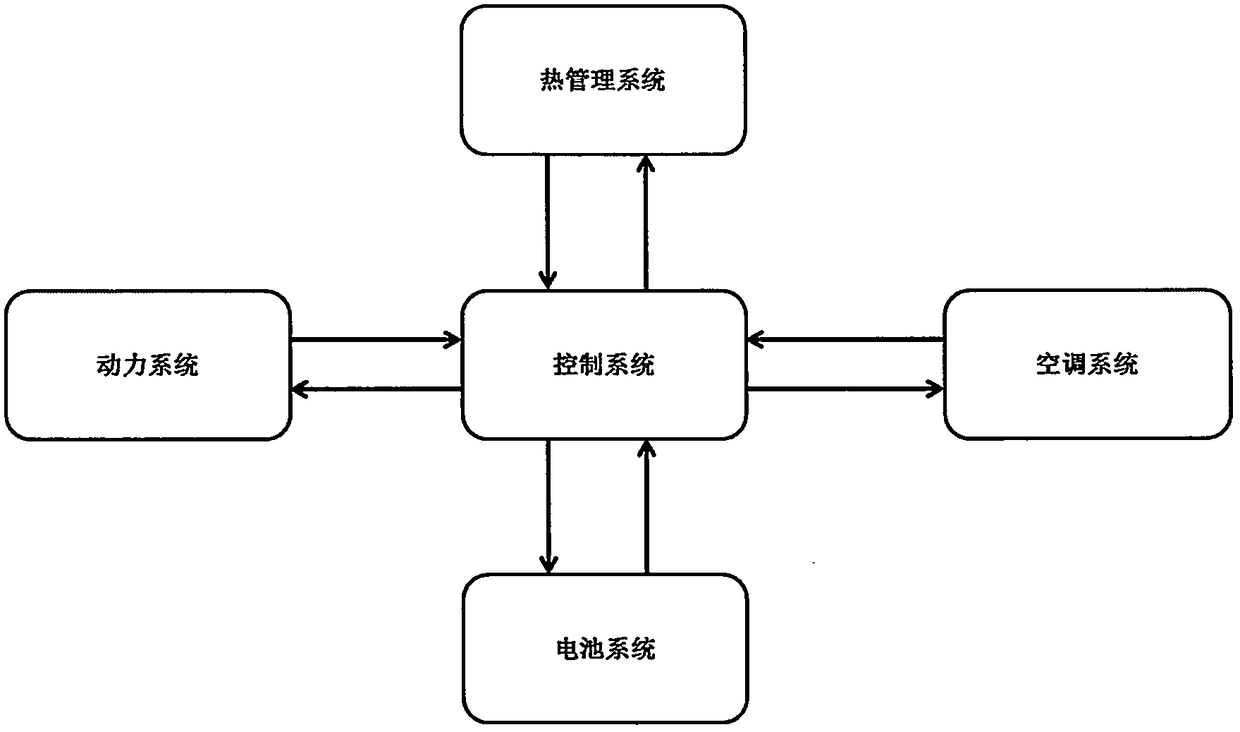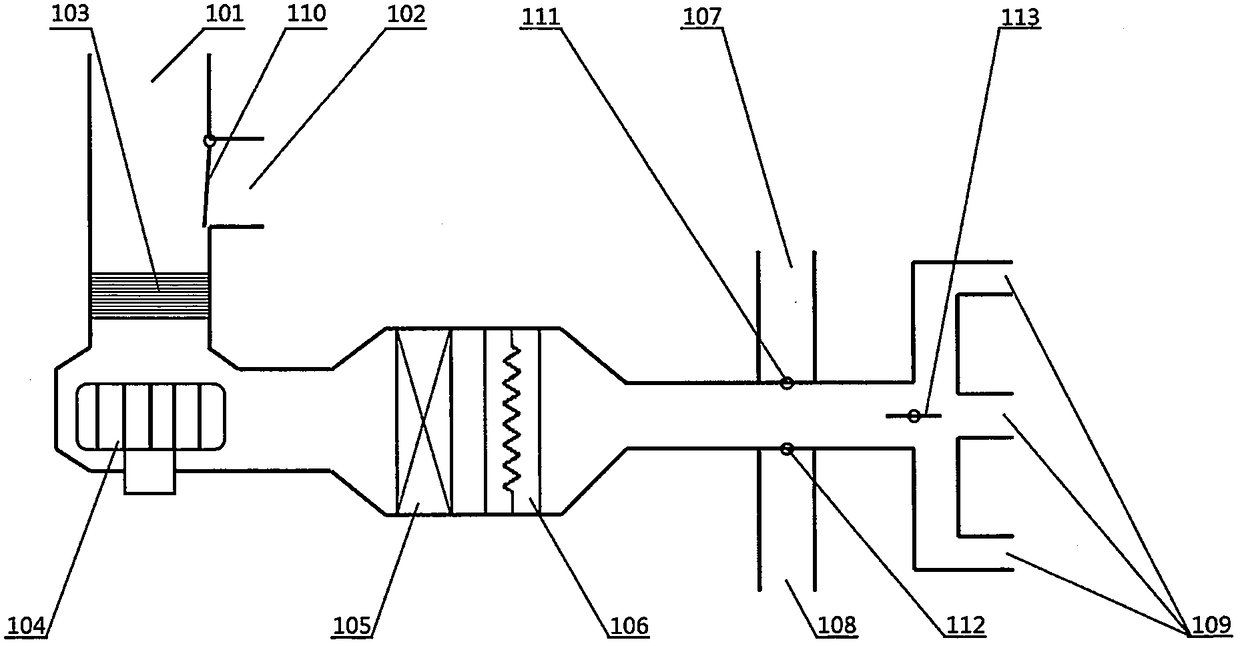Water circulation type thermal management and air conditioning system for electric vehicle
A technology for air conditioning systems and electric vehicles, which is applied to vehicle components, air handling equipment, heating/cooling equipment, etc., and can solve the problems of reducing extra power, insufficient heating and cooling capacity, etc.
- Summary
- Abstract
- Description
- Claims
- Application Information
AI Technical Summary
Problems solved by technology
Method used
Image
Examples
Embodiment 1
[0051] A water circulation heat management and air-conditioning system for electric vehicles, which is applied to electric vehicles, to meet the heat dissipation and cooling requirements of electric vehicles under various conditions of use, and realize the cooling of vehicles by circulating water in the circulation loop. The heat generated by each component is comprehensively utilized. The working mode of the thermal management and air conditioning system is mainly composed of four modes, which are high-temperature cooling mode, medium-temperature heat dissipation mode, medium-low temperature heating and dehumidification mode, and low-temperature heating mode. And the air conditioning system can work in high temperature cooling mode to cool the passenger compartment and battery system; when the external temperature is moderate, the thermal management and air conditioning system can work in medium temperature cooling mode; when the external temperature is low and the humidity is...
Embodiment 2
[0089] In this embodiment, on the basis of the first embodiment, a refrigerant circulation branch is further added, that is, the second refrigerant circulation branch, and an additional installation is made between the liquid storage tank 33 of the dryer and the electronic expansion valve 34 of the water-cooled heat exchanger. An expansion valve switches the three-way valve 36, and the rest of the thermal management and air conditioning system remains unchanged. The aforementioned electronic compressor 31, water-cooled condenser 32 and dryer liquid storage tank 33 constitute the refrigerant circulation main circuit, and the aforementioned water-cooled heat exchanger electronic expansion valve 34 and water-cooled heat exchanger 35 constitute the first refrigerant cycle branch. The refrigerant in the second refrigerant circulation branch returns to the electronic compressor 31 via the heat pump electronic expansion valve 29 and the heat pump evaporator 30 through the heat pump el...
Embodiment 3
[0110] The structure of this embodiment is basically the same as that of Embodiment 1 and Embodiment 2, except that the electronic expansion valve 34 of the water-cooled heat exchanger and the electronic expansion valve 37 of the heat pump are both electronic expansion valves with a cut-off function. The expansion valve conversion three-way valve 36 is omitted, and further cost savings can be achieved.
[0111] At this time, when the control system controls the thermal management and air-conditioning system to switch between high-temperature cooling mode, medium-temperature heat dissipation mode, medium-low temperature heating and dehumidification mode, low-temperature heating mode, and pure heat pump heating mode, it will no longer be controlled by expansion. The valve conversion three-way valve 36 controls the pipeline connection between the refrigerant and each electronic expansion valve, and the control system directly controls the on-off of each electronic expansion valve....
PUM
 Login to View More
Login to View More Abstract
Description
Claims
Application Information
 Login to View More
Login to View More - R&D
- Intellectual Property
- Life Sciences
- Materials
- Tech Scout
- Unparalleled Data Quality
- Higher Quality Content
- 60% Fewer Hallucinations
Browse by: Latest US Patents, China's latest patents, Technical Efficacy Thesaurus, Application Domain, Technology Topic, Popular Technical Reports.
© 2025 PatSnap. All rights reserved.Legal|Privacy policy|Modern Slavery Act Transparency Statement|Sitemap|About US| Contact US: help@patsnap.com



